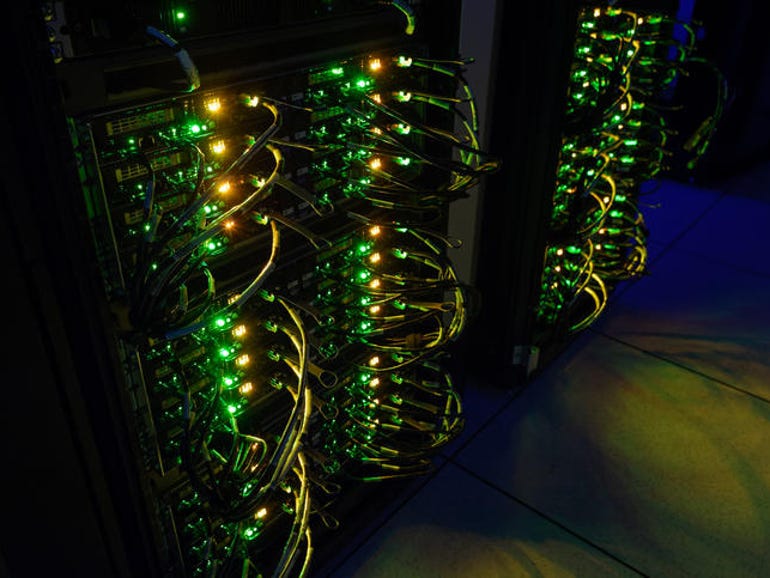Huawei wants to exploit green opportunities with cut power company

[ad_1]
Huawei Technologies aims to meet the growing demand for clean energy and IT sustainability as organizations and countries around the world set carbon neutrality goals. The Chinese tech giant has created a new subsidiary with dedicated resources to develop low-carbon systems, which can be deployed in various market segments such as data centers and electric vehicles.
Established in June 2021, Huawei Digital Power Technologies is responsible for boosting clean energy and the digitization of traditional energy. in a video interview with ZDNet.
He noted that carbon neutrality had become a shared goal for more than 140 markets, of which 12 had enacted new laws to achieve their goals, while four had proposed similar legislation and 37 others had issued related policies.
These global goals along with market demand have guided Huawei Digital Power to work on products that facilitate low carbon environments in different scenarios, including green data centers, cities, campuses, buildings and offices. factories, Sun said. He noted that 60% of the subsidiary’s total workforce, currently around 6,000 employees worldwide, was in research and development (R&D).
The creation of a separate business unit has enabled the supplier to establish specific R&D work and integrate product features that meet specific deployment requirements in various markets, so that they can better achieve their neutrality goals. carbon, he said.
Asked about the subsidiary’s revenue and customer base since its inception in June, the Huawei executive declined to provide details but said he hoped to provide indicative figures next year.
Speaker at COP26 Huawei Digital Power vice president and chief marketing officer Fang Liangzhou last month said advancements in technology are integral to tackling climate change and decarbonization.
He noted that electricity and transport were among the main sources of global carbon emissions, accounting for 40% and 21% of total emissions, respectively. Citing figures from the International Energy Agency, Fang added that the ICT industry consumes 4% of the world’s electricity.
This underscored the importance of low-carbon power generation and electric power consumption to achieve carbon neutrality, he said, adding that Huawei Digital Power aimed to generate power generation. clean energy. This included smart photovoltaic (PV) systems designed for renewable energy technologies such as solar, wind and energy storage.
According to Sun, the Chinese supplier is currently working with several customers in this region on the development of smart photovoltaic farms.
In Singapore, for example, Huawei’s string inverters were installed on the Sunseap Group’s floating solar platform, alongside the photovoltaic panels, which avoided the need for a direct current (DC) cable line. and DC junction boxes. This reduced costs and deployment time, Huawei said.
The five-hectare Sunseap floating solar farm includes 13,312 panels, 40 inverters and more than 30,000 floats. It is expected to generate up to 6.02 million kWh of energy per year, enough to power 1,250 four-room HDB apartments in Singapore and offset around 4,258 tonnes of carbon dioxide.
Huawei Digital Power also recently signed an agreement with the Thai conglomerate Charoen Pokphand (CP) to install photovoltaic panels on the roofs of 1,300 7-Eleven stores. CP is the sole operator of convenience stores in Thailand.
Towards zero carbon data centers
Asked about the main barriers to carbon neutrality, Sun said the long process of developing and replacing traditional energy with clean energy alternatives will prove difficult for many markets, especially developing countries.
He added that the cost of producing clean energy components, especially solar and wind, should be reduced to speed adoption. Noting that the cost of materials had increased recently, he said the price of photovoltaic panels, for example, had more than doubled year on year and this had had a significant impact on the industry.
He also highlighted the need to reduce the cost of energy storage systems, so that the industry could move from unstable power to stable power, which was an important part of clean energy materials.
The development of low-carbon energy sources and less energy-consuming technologies was key to achieving carbon neutrality goals, Sun said, adding that this drives much of Huawei Digital Power’s research efforts.
Data centers, in particular, were a key focus, as these facilities consumed large amounts of electricity and more would need to be built to support the growing adoption of online services, he said. Electricity tariffs and power consumption account for over 60% of the overall cost of running a data center, he added.
Responding to ZDNet’s question about the possibility of operating zero-carbon data centers, Sun said the key enabler for this would be the ability to fully power those facilities with clean energy such as solar or wind power. . However, he noted that Huawei’s internal research found that it would currently take large acres of PV power plants to power a single data center.
While the existing technology meant that it would be difficult to run zero-carbon data centers, he said it might be possible in the future as the technology continued to advance. The overall efficiency of the operation of these sites and the capacities at the system level should also be improved, he added.
Artificial intelligence (AI), for example, should be harnessed to help improve operational efficiency and reduce energy consumption. He noted that telecom operators are currently using AI to better optimize their base stations based on user demand, thereby reducing power consumption and lowering their annual electricity tariffs by 15-17%.
Additionally, systems deployed in data centers could be more compact, with higher density, so that the overall efficiency of a data center could be improved.
According to Huawei, since June 2021, it has helped customers generate 403.4 billion kWh of green electricity, save 12.4 billion kWh of electricity and reduce carbon emissions by 200 million tonnes.
RELATED COVERAGE
[ad_2]
